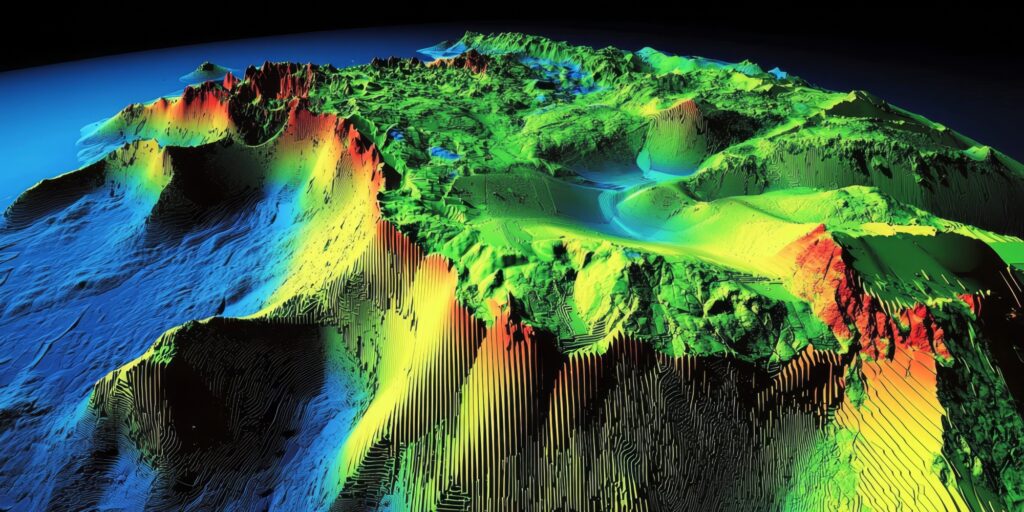
Guide
What Is a Drone 3D Model?
A drone 3D model is a digital three-dimensional representation of an object or environment created with drone data.
Drone 3D models are typically made with either photogrammetry—which uses photos—or LiDAR (Light Detection and Ranging). And increasingly, a third approach called SLAM (Simultaneous Localization and Mapping) is also used, especially in environments where GPS is unavailable or unreliable.
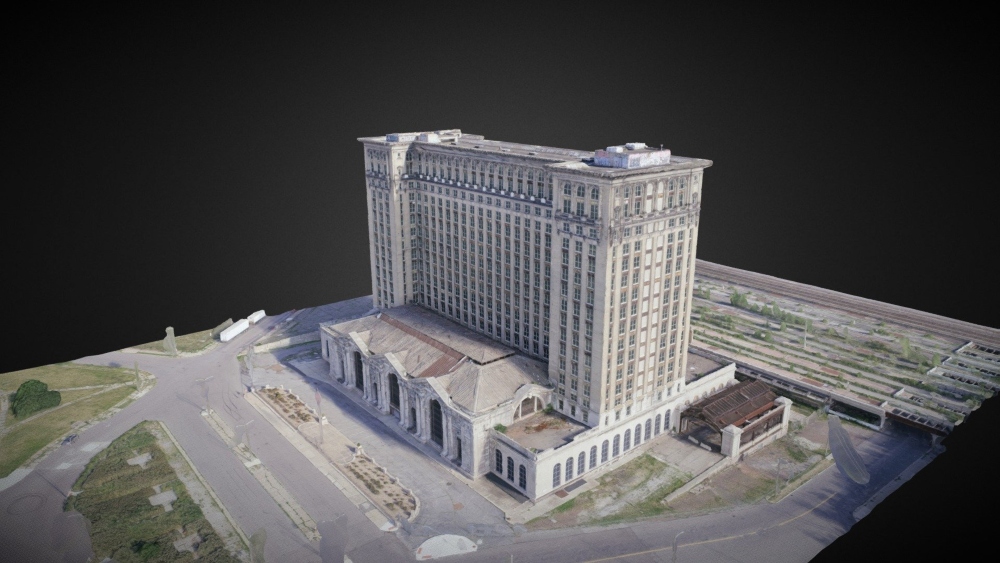
A drone 3D model made for architecture | Credit: Pix4D
These 3D models are used in a wide range of ways, including surveying, inspections, asset management, environmental monitoring, construction planning, and urban planning.
In this guide to drone 3D models, we’l covered the difference between photogrammetry and LiDAR, how to make a 3D model using each, and the main use cases for these models by industry.
You can use the menu to the right to jump around, or keep reading for the full guide.
The Best Drones for Creating 3D Models [New for 2025]
Creating accurate and detailed 3D models with drones has never been easier.
Below are the top drones for 3D modeling, each equipped with advanced features for various applications, including LiDAR and photogrammetry-based modeling.
1. Skydio X10
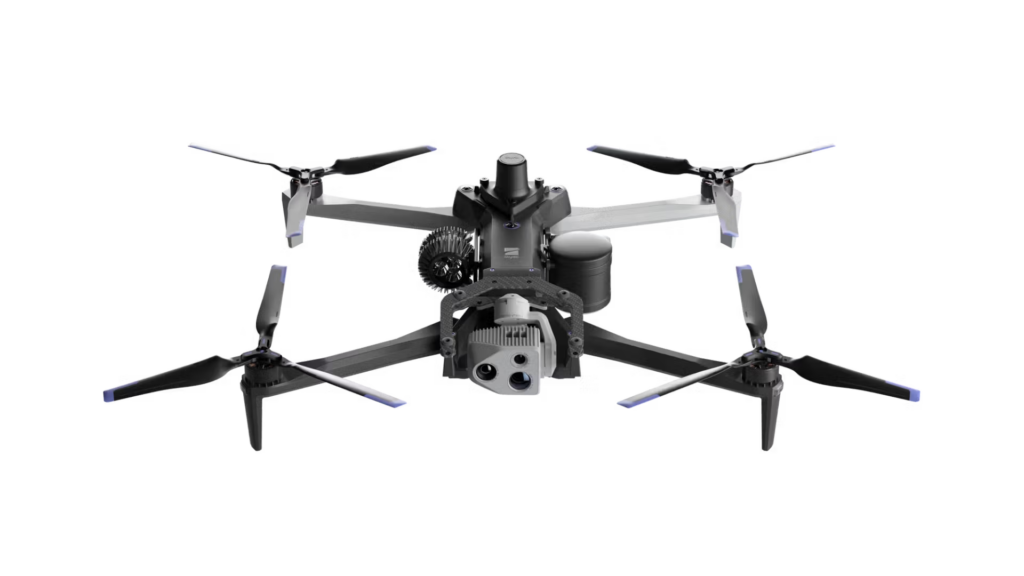
The Skydio X10 is a highly autonomous drone ideal for industrial applications. Known for its advanced obstacle avoidance and precision flying capabilities, it’s perfect for 3D modeling tasks that require reliable and accurate data collection. With its compatibility for both LiDAR and photogrammetry, the Skydio X10 excels at capturing detailed 3D models of complex environments.
- Flight time. 40 minutes
- Transmission range. 7.5 miles (12 km)
- Weight. 4.65 pounds (2.11 kg)
- Sensors. RGB camera, LiDAR sensor (Velodyne Puck Lite)
- LiDAR/Photogrammetry. Supports both LiDAR and photogrammetry
Learn more about the Skydio X10.
2. DJI Matrice 4
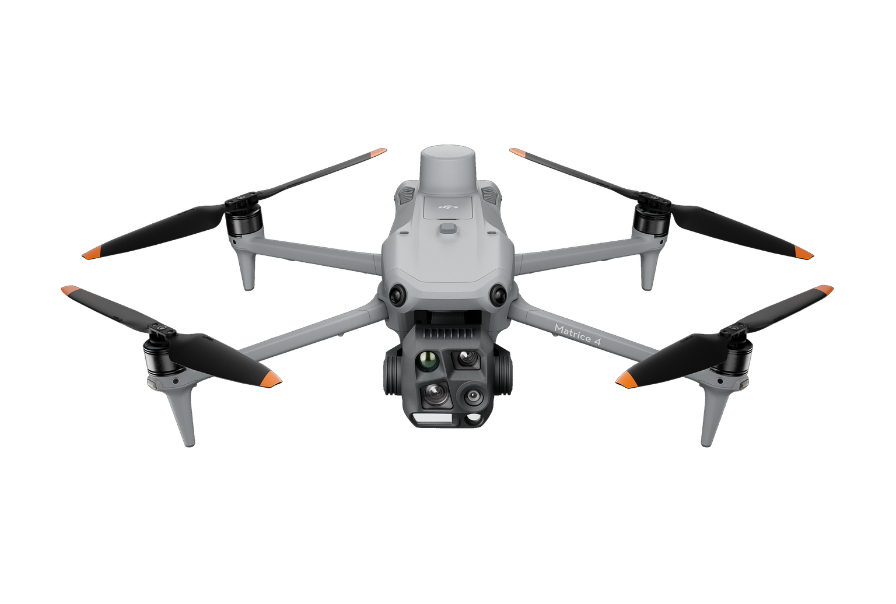
The DJI Matrice 4 is a powerful, versatile industrial drone that offers exceptional stability and reliability. It’s commonly used for surveying and mapping, providing high-quality 3D models through both LiDAR and photogrammetry. It’s compatible with various sensors and ideal for creating 3D models of large areas, structures, and terrain.
- Flight time. 50 minutes
- Transmission range. 9.3 miles (15 km)
- Weight. 8.38 pounds (3.8 kg)
- Sensors. High-resolution RGB camera, supports LiDAR sensors
- LiDAR/Photogrammetry. Supports both LiDAR and photogrammetry
Learn more about the DJI Matrice 4.
3. DJI Mavic 3 Enterprise

The DJI Mavic 3 Enterprise is a compact yet powerful drone suitable for mapping and inspection work. It’s designed for photogrammetry and can easily integrate with other sensors, making it a great choice for creating 3D models in urban environments or construction sites. The Mavic 3 Enterprise is efficient for high-resolution data collection and quick setup.
- Flight time. 45 minutes
- Transmission range. 9.3 miles (15 km)
- Weight. 2.65 pounds (1.2 kg)
- Sensors. 20MP camera, optional LiDAR compatibility
- LiDAR/Photogrammetry. Primarily used for photogrammetry, but compatible with LiDAR
Learn more about the DJI Mavic 3 Enterprise.
4. DJI Matrice 350 RTK
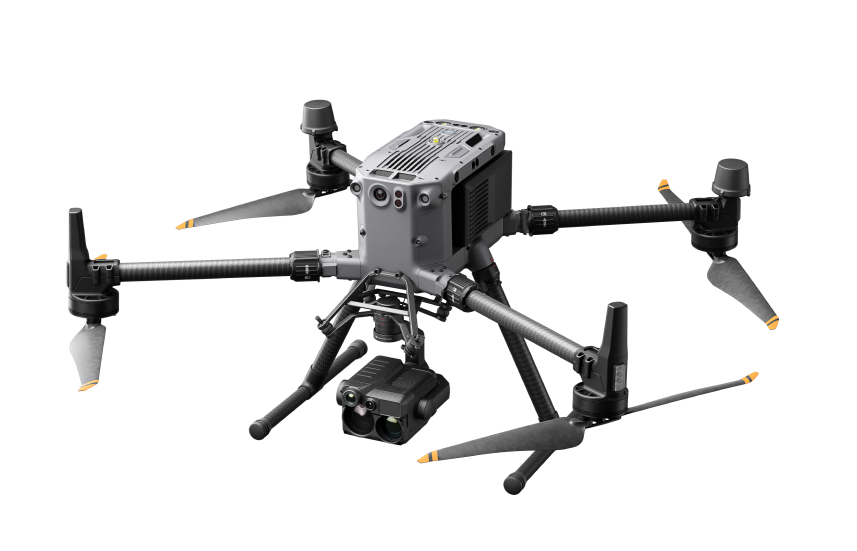
The DJI Matrice 350 RTK is designed for industrial and surveying applications. It offers high-precision positioning and supports LiDAR and photogrammetry to produce detailed 3D models for various sectors like construction, mining, and power generation. Its versatility and accuracy make it an excellent choice for large-scale mapping projects.
- Flight time. 55 minutes
- Transmission range. 9.3 miles (15 km)
- Weight. 8.38 pounds (3.8 kg)
- Sensors. 45MP camera, RTK module, LiDAR compatibility (supports Zenmuse L1)
- LiDAR/Photogrammetry. Supports both LiDAR (Zenmuse L1) and photogrammetry
Learn more about the DJI Matrice 350 RTK.
5. Flyability Elios 3
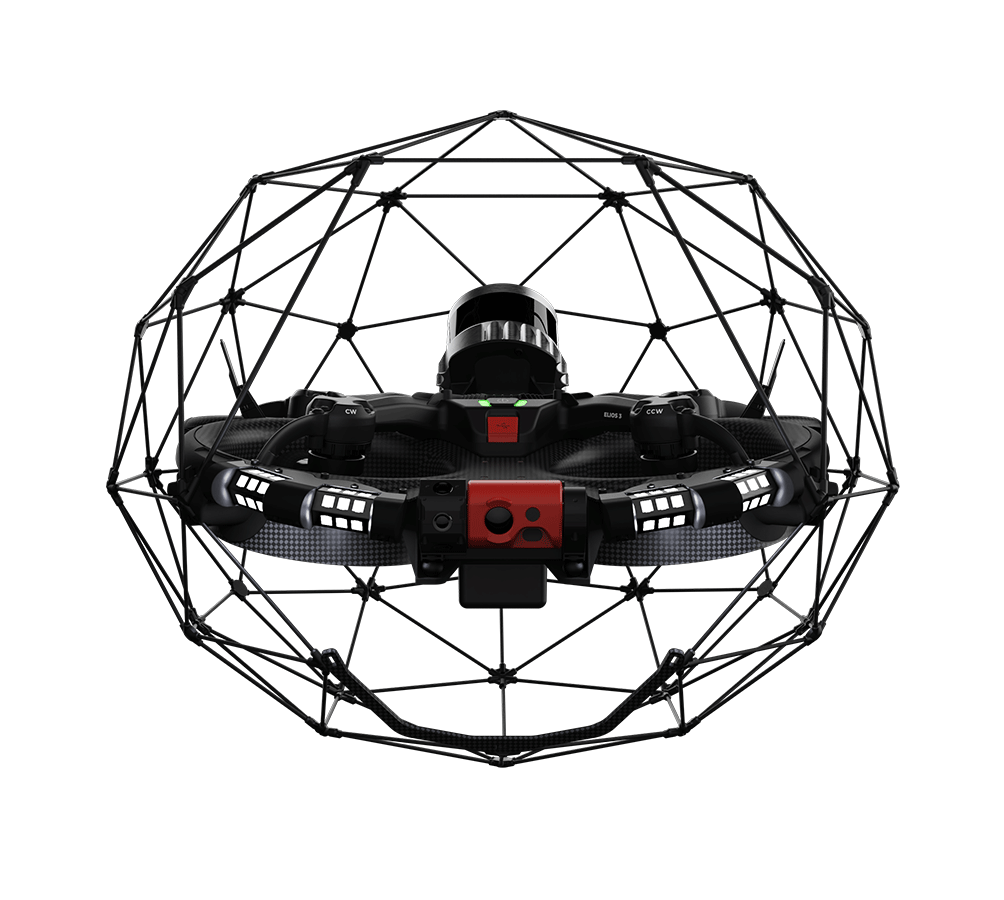
The Flyability Elios 3 is a unique indoor drone designed specifically for confined space inspections and 3D modeling. Equipped with a rugged cage and advanced sensors, it allows operators to navigate hazardous environments safely and capture high-quality photogrammetry models, especially in environments like tanks, pipes, and other confined areas.
- Flight time. 12 minutes
- Transmission range. 328 feet (100 m)
- Weight. 4.18 pounds (1.9 kg)
- Sensors. 4K camera, thermal camera, LiDAR compatibility
- LiDAR/Photogrammetry. Supports photogrammetry; LiDAR-compatible with external sensor
How to Make a Drone 3D Model: LiDAR vs. Photogrammetry vs. SLAM
Creating a 3D model with a drone takes three key steps:
- Deciding how you’ll capture your 3D model data (in this case, it will be by drone).
- Capturing the data that will be turned into the 3D model.
- Processing that data using special software
As we mentioned above, the two main methods for creating drone 3D models are with LiDAR or Photogrammetry.
But SLAM is also gaining traction for drone 3D modeling. SLAM uses onboard sensors-such as cameras or LiDAR-to simultaneously map an environment and track the drone’s position within it, making it ideal for mapping areas where GPS is unavailable, such as indoors, underground, or in dense forests.
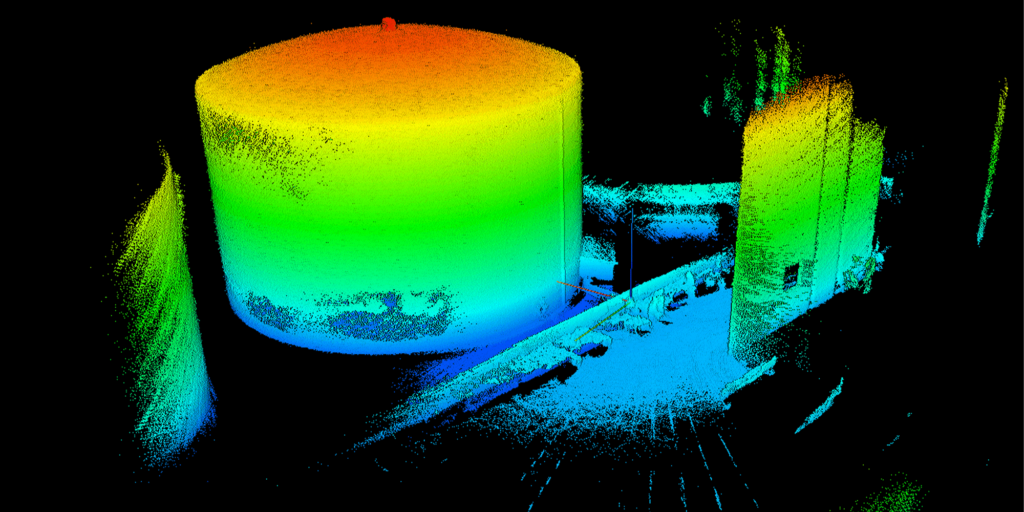
The chart below covers the key differences between the three.
Scan it to get an overview or keep reading to learn more about both LiDAR and photogrammetry.
| Feature | LiDAR | Photogrammetry | SLAM |
|---|---|---|---|
| How It Works | Laser pulses measure distances to create a 3D point cloud | Overlapping photos are processed into a 3D model | Real-time mapping using sensors (LiDAR or cameras) and localization algorithms |
| Best For | Dense vegetation, terrain, high-precision surveys | Detailed textures, buildings, open areas | GPS-denied, indoor, or complex environments |
| Output | High-accuracy 3D point cloud | Textured 3D mesh or point cloud | Real-time 3D map and drone position |
| Typical Use Cases | Forestry, mining, infrastructure | Architecture, construction, agriculture | Indoor inspection, tunnels, confined spaces |
| Cost | High | Moderate to low | Varies (depends on sensors and software) |
Choosing the Right Method for Your Drone 3D Model
The choice between LiDAR and Photogrammetry depends largely on your project’s requirements:
- Use LiDAR if: You need high precision, are working in dense vegetation, or need to map large areas or complex terrain.
- Use Photogrammetry if: You’re focusing on surface textures, need detailed models of buildings or structures, or are working in environments with clear weather and controlled lighting.
- Use SLAM if: You need real-time mapping, are working indoors, in GPS-denied environments (like tunnels or dense forests), or require adaptive navigation for fast-changing or cluttered spaces
What Is LiDAR?
LiDAR is a technology that uses laser pulses to measure distances to objects and create highly accurate 3D point clouds. LiDAR works by emitting light in the form of laser beams, which bounce off objects and return to the sensor, enabling precise distance measurements. These measurements are then used to map the topography of the environment, capturing details such as terrain, vegetation, and structures.
LiDAR is ideal for projects where high precision is required, especially in difficult environments like dense vegetation, low-light conditions, or complex terrain. It’s widely used in industries like forestry and large-scale terrain mapping, where accurate, detailed models are crucial for decision-making and planning.
What Is Photogrammetry?
Photogrammetry is the process of creating 3D models by capturing high-resolution images from a drone and using specialized software to convert those images into a 3D model. Photogrammetry works by overlapping multiple photos taken from different angles, allowing the software to calculate the distances between key points to generate a three-dimensional representation.
This method is excellent for capturing detailed surface textures, such as those found in buildings, urban environments, and agriculture. It’s commonly used for tasks that require intricate detail, like building modeling, landscape mapping, and analyzing the texture and features of objects or surfaces.
What Is SLAM?
SLAM (Simultaneous Localization and Mapping) is a cutting-edge technology that enables drones to create a map of an unknown environment while simultaneously tracking their own position within that map. Unlike traditional mapping methods that rely on GPS or require extensive post-processing, SLAM allows for real-time 3D mapping and autonomous navigation-even in GPS-denied environments such as tunnels, dense forests, or indoor spaces.
SLAM works by fusing data from various onboard sensors-such as LiDAR, cameras, and inertial measurement units (IMUs)-to continuously scan the surroundings and update both the map and the drone’s location as it moves. This process enables the drone to adapt to dynamic environments, avoid obstacles, and deliver accurate 3D models on the fly.
SLAM is ideal for applications where instant results and navigation without GPS are critical. It is widely used for indoor inspections, underground exploration, disaster response, and mapping complex or confined spaces. By providing real-time situational awareness and high-precision mapping, SLAM is transforming how drones are used across industries like construction, infrastructure assessment, mining, and emergency response.
How To Make A Drone 3D Model with Photogrammetry
To create a 3D model with a drone, you need to gather a comprehensive dataset. Here’s how to collect the data required for creating your 3D model:
- Get a drone with a high-quality camera. Professional drones like the SenseFly eBee Classic are often used for aerial photogrammetry.
- Set your ground control points (GCPs). GCPs are black and white square markers placed on the ground around your survey area. These reference points help reduce errors and improve the accuracy of your 3D model by providing known coordinates.
- Set up your drone camera and automate flight paths. Ensure you have enough battery life and memory for the mission. Calibrate your drone’s camera settings, such as aperture and shutter speed, and confirm that the automated flight path is set up correctly.
- Conduct the survey on a clear day. To get the best data for your model, survey on a day with clear weather and avoid cloudy conditions to ensure quality images and data capture.
- Process your data with drone 3D modeling software. After data collection, use photogrammetry software like Pix4Dmapper to process your images into a 3D model. You may need a GIS specialist for complex tasks.
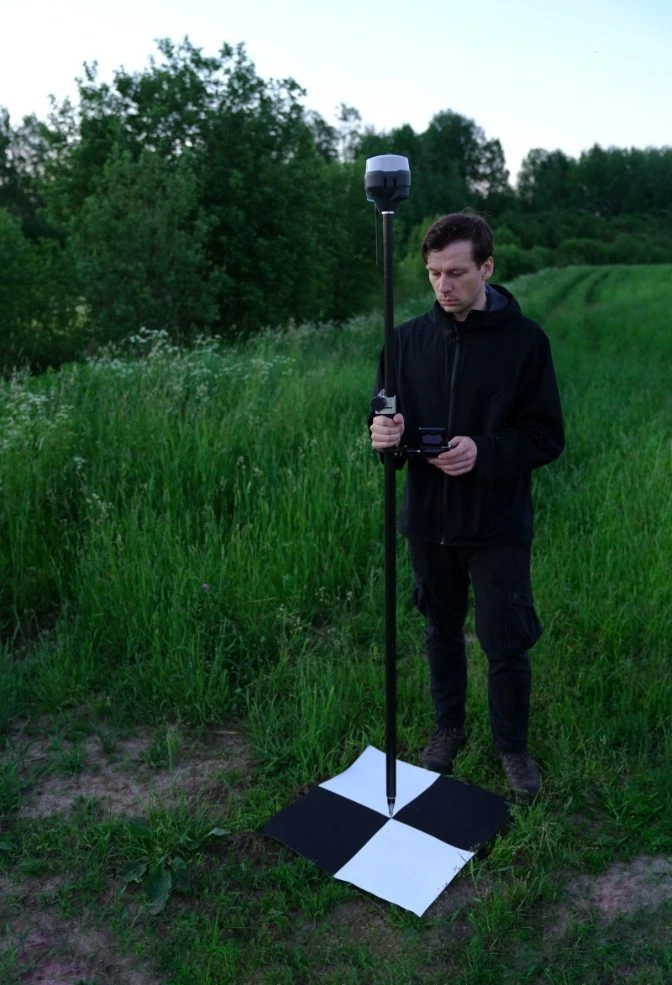
Getting the Right Data for Your Drone 3D Model
Aerial photogrammetry works by measuring the same subject from multiple perspectives to create an accurate 3D model through triangulation.
The more photos you take, the more data you’ll have to generate a precise model.
Considerations for setting up your automated survey flight:
- Ensure a 60-70% overlap between images to allow for accurate triangulation.
- Fly your drone at an altitude of 150ft to 200ft for optimal straight-down images.
- Capture images from a high altitude (30º camera angle) to get wide coverage of the subject.
- Lower your altitude to a middle range (45º camera angle) for better detail.
- Use a low altitude (70º camera angle) to capture fine details and close-up views.
- Adjust your radius to keep the subject in frame at all times.
Tips for Photogrammetry Data Collection
Here are some practical tips to improve your photogrammetry data collection:
- Ensure sufficient image overlap (60-70%) for accurate triangulation and model generation.
- Capture photos from various angles to ensure comprehensive coverage of the subject.
- Double-check your camera settings before flying, especially aperture, shutter speed, and white balance, to ensure optimal lighting and exposure.
- Maintain consistent flight altitudes to avoid scale discrepancies between images.
- If surveying large areas, use a grid flight pattern to ensure no areas are missed.
Processing Photogrammetry Data into a 3D Model
Once you’ve collected the imagery, follow these steps to process the data into a 3D model:
- Upload your images to photogrammetry software like Pix4Dmapper or Agisoft Metashape to stitch them together into a 3D point cloud.
- Georeference the point cloud with your ground control points (GCPs) to ensure accurate scaling and location within real-world coordinates.
- Optimize the 3D model in the software, adjusting texture, meshing, and other parameters for clarity and detail.
- Export the model in the desired format (e.g., .obj, .fbx) for further analysis or integration into other platforms.
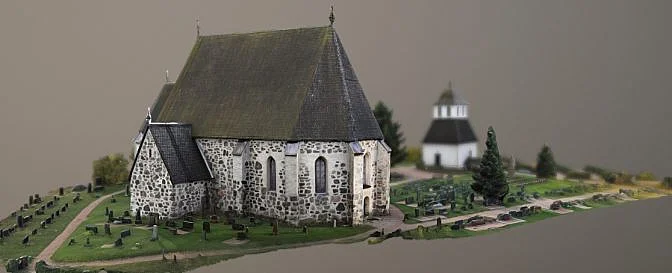
How to Make a Drone 3D Models with LiDAR
To create a drone 3D model using LiDAR technology, you need to collect accurate and comprehensive data that can be processed into a detailed 3D model. Here’s how to gather the data required to create a high-quality LiDAR drone 3D model:- Get a drone with LiDAR capability. LiDAR-equipped drones like the DJI Matrice 350 RTK or Flyability’s Elios 3 are commonly used for high-precision mapping and modeling. These drones are equipped with LiDAR sensors that emit laser pulses to measure distances and create 3D point clouds of the environment.
- Set your ground control points (GCPs). GCPs are crucial for georeferencing the LiDAR data, ensuring accurate scale and alignment. These points are placed on the ground and have known geographic coordinates. Make sure to distribute these GCPs throughout the area you are surveying to minimize errors and improve the overall accuracy of the 3D model.
- Plan your flight mission. Set up your drone to fly at the appropriate altitude, typically between 100 and 200 meters, depending on the resolution you require. Ensure your drone is set to cover the survey area systematically, with flight paths that overlap slightly to improve data accuracy. The LiDAR sensor should be calibrated for the proper settings, such as scanning frequency and laser intensity.
- Choose the right weather and environmental conditions. Like other aerial surveys, it’s best to perform the LiDAR survey in clear weather conditions. Avoid flying in rainy, foggy, or windy conditions that could interfere with the quality of the data. Ideal conditions include dry, clear days with minimal wind.
- Process your LiDAR data in specialized software. Once you’ve gathered the data, you’ll need to process it into a 3D model using specialized software. Popular platforms for LiDAR processing include Autodesk ReCap, Pix4Dmapper, or Bentley ContextCapture. These programs help you turn raw LiDAR data into a usable 3D point cloud, which can then be meshed to create a detailed 3D model of the area or structure.
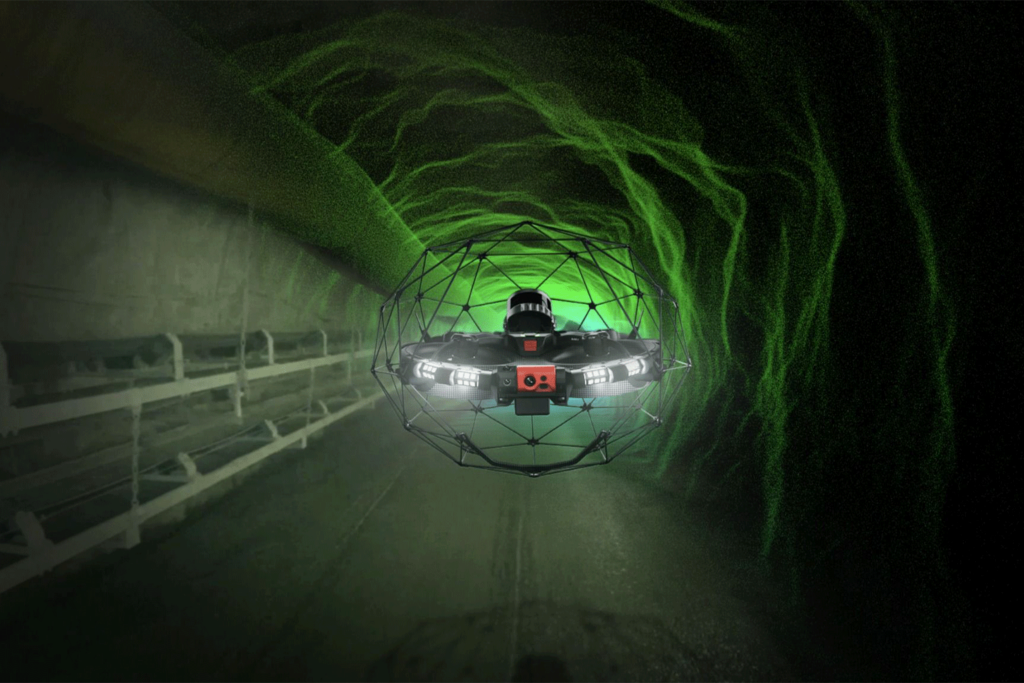
Getting the Right Data for Your Drone 3D Model Using LiDAR
LiDAR works by emitting laser pulses and measuring the time it takes for them to return to the sensor, creating a dense point cloud of data that represents the physical surface of the scanned environment. To achieve the best results, follow these considerations when setting up your LiDAR survey:- Ensure adequate point density—higher point density provides more detailed and accurate 3D models. Aim for a minimum of 8-12 points per square meter for high-resolution data.
- Flight height should be adjusted based on the level of detail needed. For larger areas, a higher altitude is acceptable, but for smaller, more detailed scans, a lower flight height is preferred.
- Overlap between flight lines is critical. A 30% overlap between adjacent passes helps ensure continuous coverage and more precise point cloud alignment.
- Use proper LiDAR sensor settings, including scan frequency and pulse rate. Make sure the settings are optimized for the type of terrain you are scanning (e.g., forests, urban areas, or open fields).
- Monitor GPS accuracy to ensure that the LiDAR data is correctly georeferenced, especially for large areas or when precise measurements are critical.
Tips for LiDAR Data Collection
Here are some helpful tips to improve your LiDAR data collection process:- Fly the drone in a grid pattern to ensure full coverage of the target area. Adjust flight paths based on the terrain and ensure overlap for better point cloud generation.
- Make sure the drone’s LiDAR sensor is properly calibrated before every mission to avoid inaccuracies in the data.
- For complex environments, such as densely forested areas, consider using multiple flight passes at different altitudes to capture a complete dataset.
- Check the data quality during the flight. If you notice any gaps or discrepancies, adjust the flight path in real-time to capture missing data.
Processing LiDAR Data into a 3D Model
Once you have collected the LiDAR data, the next step is to process the point cloud into a 3D model using specialized software. This typically involves:- Importing the LiDAR point cloud data into software like Autodesk ReCap or Pix4Dmapper, where the data is cleaned, filtered, and transformed into a 3D mesh.
- Georeferencing the point cloud data using the ground control points (GCPs) you set up earlier, ensuring the model is scaled correctly and aligned to real-world coordinates.
- Optimizing the mesh for visualization or further analysis, including adding textures or merging point clouds from different passes to create a complete model.
- Exporting the 3D model into a file format (e.g., .obj, .fbx, or .las) that can be used for further analysis, visualization, or integration into other digital platforms.
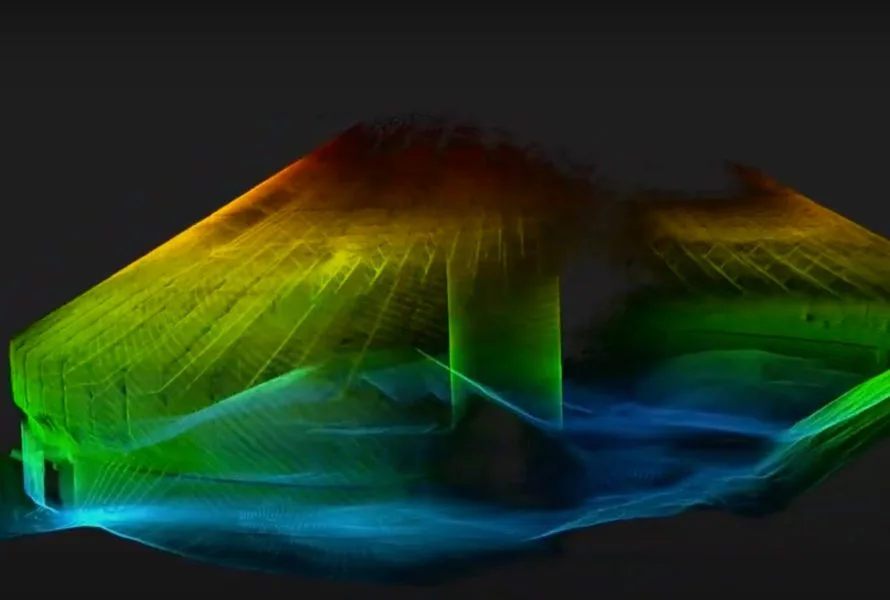
How to Make a Drone 3D Model with SLAM
To create a 3D model using SLAM (Simultaneous Localization and Mapping), you’ll use a drone equipped with sensors like LiDAR or cameras and specialized SLAM software that generates a 3D map in real time-even in GPS-denied environments such as indoors, underground, or in complex industrial sites.
Here’s how to gather and process data for a high-quality SLAM-based drone 3D model:
- Choose a drone with SLAM capability. Select a drone equipped with SLAM-compatible sensors, such as the Flyability Elios 3 or a similar model with onboard LiDAR or stereo cameras. These drones are specifically designed for indoor or GPS-denied mapping and real-time 3D modeling.
- Plan your mission and configure your sensors. Before flying, set up your SLAM system by calibrating the sensors and configuring the mapping parameters in the SLAM software. Unlike traditional photogrammetry or LiDAR mapping, SLAM does not require ground control points (GCPs), but you should ensure the environment is safe and accessible for the drone.
- Fly the drone and capture data in real time. Operate the drone manually or with assisted navigation, allowing it to explore and scan the environment. As the drone flies, the SLAM system will simultaneously build a 3D map and track the drone’s position, updating the model in real time. For best results, fly slowly and steadily, and ensure all areas of interest are scanned from multiple angles.
- Monitor the mapping progress live. Use the SLAM software’s live visualization to check for coverage gaps or areas needing more detail. If necessary, adjust your flight path or revisit sections to ensure a complete dataset.
- Export and refine your 3D model. Once the mission is complete, export the 3D map or point cloud from the SLAM software. You can further process or clean the model in specialized 3D editing or point cloud software, and export it in formats like .las, .obj, or .ply for analysis, visualization, or integration into other workflows.
Getting the Right Data for Your Drone 3D Model Using SLAM
SLAM works by continuously fusing sensor data-such as LiDAR scans or camera images-with inertial measurements to build an accurate 3D map as the drone moves. The key to high-quality SLAM mapping is thorough coverage: fly slowly, avoid abrupt movements, and ensure you scan all surfaces from multiple angles to minimize blind spots.
Tips for SLAM Data Collection
- Fly at a steady speed and maintain a clear line of sight to avoid losing tracking or missing areas.
- Scan complex environments from different perspectives to capture all surfaces and features.
- Use the live map view to identify and revisit missed sections during the flight.
- Avoid sudden movements or rapid changes in direction, which can disrupt SLAM tracking.
- Ensure your sensors are clean and properly calibrated before each mission.
Processing SLAM Data into a 3D Model
After flight, review and refine your SLAM-generated 3D map:
- Export the point cloud or mesh from your SLAM software for further editing or analysis.
- Optionally, clean up noise or fill small gaps in specialized 3D modeling software.
- Export the final model in a standard format (.las, .obj, .ply) for use in CAD, GIS, or visualization tools.
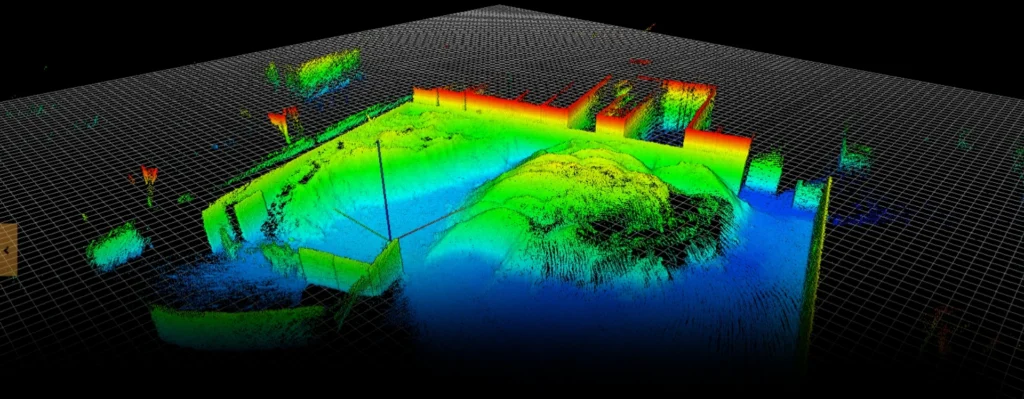
Industries That Use Drone 3D Models
Drone 3D models are revolutionizing a wide range of industries due to their accuracy, efficiency, and ability to capture complex data in difficult-to-reach environments.
By utilizing photogrammetry or LiDAR-based drones, industries are improving asset management, safety, and operational efficiency.
Here’s how drone 3D models are applied in various heavy industries.
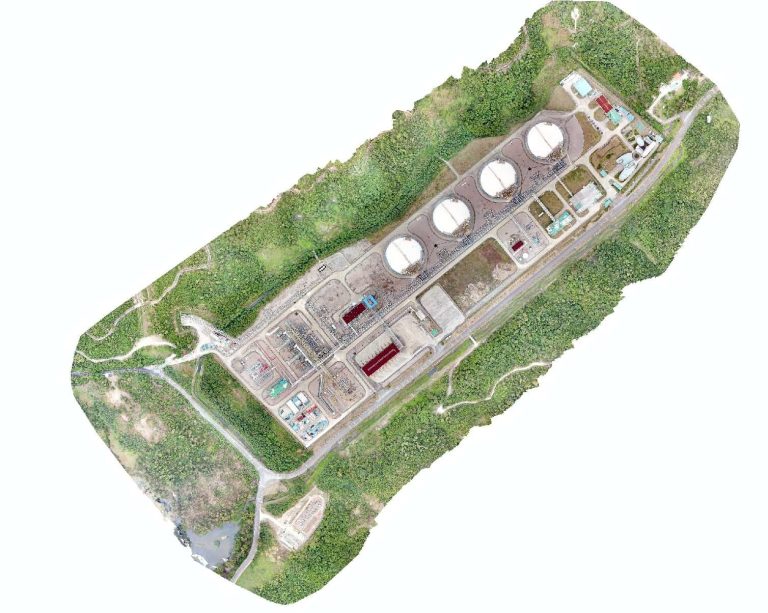
1. Oil & Gas
The oil and gas industry benefits significantly from drone 3D models, which are used for a range of applications, from pipeline inspections to rig and facility monitoring.
Drones provide an efficient, safe, and accurate way to inspect hard-to-reach areas, including offshore rigs and pipelines in remote locations.
- Pipeline inspections. Drone 3D models are used to inspect miles of pipelines, detecting issues like leaks, corrosion, and defects without the need for hazardous on-site inspections.
- Rig inspections. Create 3D models of offshore or onshore rigs, enabling virtual inspections of hard-to-reach areas, reducing the risk to personnel.
- Mapping & monitoring. Use drones to map oil fields and drilling sites for resource management, operational planning, and environmental assessments.
- Facility inspections. Drones perform detailed inspections of storage tanks, processing facilities, and refineries to ensure safety and regulatory compliance.
2. Power Generation
Drone 3D models are essential in the power generation sector, where they provide critical insights for inspecting turbines, power plants, and other key infrastructure.
These models, often created with advanced sensors, improve safety and efficiency in the inspection process.
- Turbine inspections. Inspect wind turbines, solar panel arrays, and hydroelectric plants, identifying wear and tear, cracks, or defects.
- Facility maintenance. Create 3D models of power plants, substations, and grid infrastructure to monitor maintenance needs and ensure structural integrity.
- Safety assessments. Assess high-risk areas such as power lines, electrical grids, and nuclear power plants using drone-generated 3D models.
- Environmental impact studies. Track environmental changes related to power generation, ensuring compliance with environmental regulations and monitoring operational impact.
3. Petrochemical & Chemical Industries
In the petrochemical and chemical industries, drone 3D models are used for inspecting complex facilities, pipelines, and storage tanks.
These models help improve safety and regulatory compliance by providing detailed visual representations of equipment and infrastructure.
- Tank inspections. Inspect storage tanks for cracks, corrosion, and leaks, using drones to provide detailed 3D models of internal and external surfaces.
- Facility mapping. Create comprehensive 3D maps of chemical processing plants for maintenance, planning, and regulatory purposes.
- Pipeline integrity checks. Monitor the condition of pipelines, especially those running through hazardous environments, using drone-created 3D models to detect weaknesses and prevent failures.
- Compliance & safety. Ensure adherence to industry safety standards and regulations by using drone 3D models to identify problem areas and mitigate risks before they escalate.
4. Mining
Drone 3D models are crucial in mining for applications such as geological surveys, pit mapping, and environmental monitoring.
Drones help monitor vast mining sites with minimal disruption to operations, enhancing safety and productivity.
- Pit & quarry mapping. Generate 3D models of open-pit mines, quarries, and excavation sites for volume measurements, land analysis, and topographic mapping.
- Geological surveys. Use drones to map geological features and create models that support mineral exploration and resource extraction.
- Environmental monitoring. Monitor land restoration, tailings management, and the environmental impact of mining activities using accurate drone-based 3D models.
- Safety monitoring. Conduct regular inspections of mining operations to ensure worker safety and compliance with environmental regulations.
5. Pharmaceuticals
Drone 3D models are becoming increasingly important in the pharmaceutical industry for inspections and maintaining critical infrastructure.
These models help ensure regulatory compliance and improve operational efficiency in the manufacturing and storage of pharmaceuticals.
- Cleanroom inspections. Inspect cleanroom environments using drone 3D models to maintain hygiene standards and meet regulatory requirements.
- Manufacturing facility inspections. Use drone 3D models to inspect pharmaceutical manufacturing equipment, ensuring that they are functioning properly and safely.
- Storage facility mapping. Create detailed 3D models of storage facilities to track inventory, monitor conditions, and ensure compliance with pharmaceutical regulations.
- Regulatory compliance. Use drone 3D models to ensure all processes and equipment are compliant with industry regulations, reducing the risk of fines and non-compliance.
6. Construction
Drone 3D models are widely used in the construction industry for project monitoring, site surveying, and infrastructure inspections. They provide detailed visualizations that aid in the planning, execution, and ongoing management of construction projects.
- Project monitoring. Monitor construction progress by creating 3D models that track site changes over time and identify potential issues early.
- Site surveying. Use drones to conduct topographic surveys of construction sites, providing accurate data for project planning and design.
- Building inspections. Inspect large and complex buildings and infrastructure using drone-generated 3D models, improving safety and reducing downtime.
- Material quantity verification. Ensure accurate material quantities on construction sites by using drones to generate 3D models for volume calculations.
7. Water and Wastewater Utilities
Drone 3D models are indispensable in the water and wastewater utility industries, helping inspect treatment plants, pipelines, and reservoirs.
Drones enable the collection of high-resolution data while minimizing the need for manual inspections in dangerous or hard-to-reach locations.
- Water treatment plant inspections. Use drone 3D models to inspect water treatment facilities, identifying structural issues and ensuring compliance with health and safety regulations.
- Pipelines & reservoir mapping. Map pipelines and reservoirs, using drones to monitor for leaks, sediment buildup, or other issues that could compromise water quality or infrastructure integrity.
- Environmental monitoring. Track environmental changes and potential risks to water resources, ensuring the ongoing health of water ecosystems and compliance with regulations.
- Asset management. Use drone 3D models to create accurate inventories of water assets, facilitating maintenance and repairs while improving operational efficiency.
Drone 3D Model FAQ
Here are answers to the most commonly asked questions about drone 3D models.
What is a drone 3D model?
A drone 3D model is a three-dimensional representation of an object or area created using data collected by drones. These models are often created using photogrammetry or LiDAR technology, which capture detailed images or laser scans of the subject. The data is then processed into a 3D model that can be used for analysis, inspections, and planning in various industries.
How do drones create 3D models?
Drones create 3D models by capturing high-resolution images or laser scans of a subject from multiple angles. These data points are then processed by software to stitch them together into a 3D model. Depending on the application, the drone may use photogrammetry (capturing images for model creation) or LiDAR (using laser pulses to measure distances) to gather data.
What industries use drone 3D models?
Drone 3D models are used in a variety of industries, including:
- Oil & Gas – For pipeline inspections, rig inspections, and facility mapping.
- Power Generation – For turbine inspections, facility maintenance, and environmental impact studies.
- Petrochemical & Chemical – For tank inspections, facility mapping, and compliance checks.
- Mining – For pit and quarry mapping, geological surveys, and safety monitoring.
- Pharmaceuticals – For inspecting cleanrooms, manufacturing equipment, and regulatory compliance.
- Construction – For project monitoring, site surveying, and building inspections.
- Water & Wastewater – For inspecting water treatment plants, pipelines, and reservoirs.
How do drone 3D models improve safety?
Drone 3D models improve safety by allowing inspections and data collection to be done remotely, reducing the need for workers to enter hazardous environments such as confined spaces, high-risk areas, or difficult-to-reach locations. This minimizes exposure to potential dangers and prevents accidents that could occur during traditional manual inspections.
What are the benefits of using drones for inspections over traditional methods?
Drones offer several advantages over traditional inspection methods, including:
- Improved Safety: Drones can reach hazardous areas without putting personnel at risk.
- Cost Efficiency: Drones reduce the need for scaffolding, cranes, and other expensive equipment, lowering inspection costs.
- Faster Data Collection: Drones can cover large areas in less time compared to manual inspections, leading to quicker decision-making.
- Higher-Quality Data: Drones equipped with LiDAR or high-definition cameras provide more detailed and accurate data than traditional methods.
Can drone 3D models be used for regulatory compliance?
Yes, drone 3D models are invaluable for ensuring regulatory compliance. Many industries, such as oil & gas and power generation, have strict safety and environmental regulations. Drone 3D models allow companies to monitor their assets, identify potential issues early, and demonstrate that they are complying with regulations by providing accurate, up-to-date data in the form of 3D models.
What software do I need to process drone 3D models?
To process drone 3D models, you will need specialized software. Some popular options include:
- Pix4Dmapper: A widely used photogrammetry software that converts drone images into 3D models.
- Agisoft Metashape: A photogrammetry software used for creating 3D models from drone imagery.
- DroneDeploy: A cloud-based platform for creating 3D models from drone data.
- FARO Scene: A LiDAR data processing software that creates accurate 3D models from laser scans.
What is the difference between photogrammetry and LiDAR for drone 3D models?
Photogrammetry uses high-resolution imagery captured by drones to generate 3D models, whereas LiDAR uses laser pulses to measure distances and create highly detailed 3D point clouds. Photogrammetry is great for generating textured models and is typically used for mapping surfaces, while LiDAR excels at creating models of terrain and vegetation, even in low light or dense vegetation.
How accurate are drone 3D models?
The accuracy of drone 3D models depends on factors like the quality of the equipment used, flight conditions, and the processing software. For photogrammetry-based models, the accuracy can be within a few centimeters, while LiDAR-based models can offer even higher precision, with accuracy down to millimeters. Proper ground control points (GCPs) can also improve the overall accuracy of the model.
Can drone 3D models be used for environmental monitoring?
Yes, drone 3D models are commonly used for environmental monitoring. In industries like mining, construction, and power generation, drones can create 3D models to monitor environmental changes, assess the impact of operations, and ensure compliance with environmental regulations. These models provide valuable insights into terrain changes, vegetation health, and infrastructure integrity.
